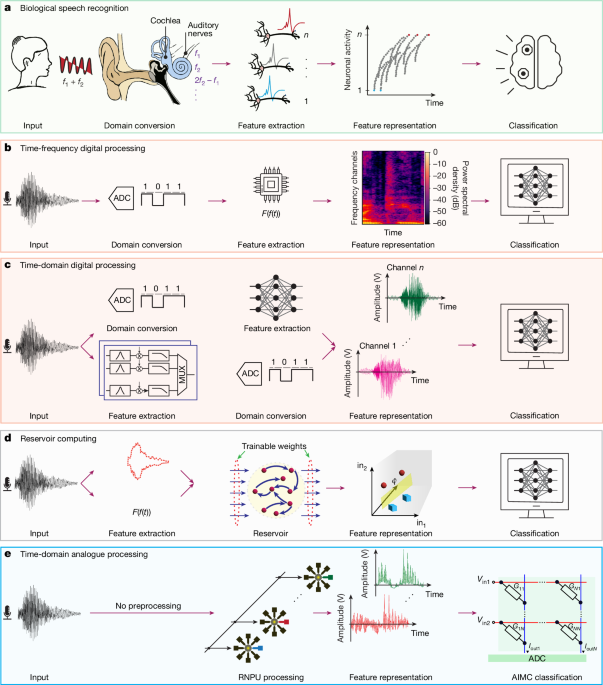
"The human ear features an ingenious preprocessing system: hair cells on the cochlea's basilar membrane decompose sound into frequency components and transduce mechanical vibrations into electrical signals7, which the auditory nerve transmits to the brain in the form of neural spikes8 (Fig. 1a). As the hair cell vibrations do not increase linearly with the sound intensity and the cochlea shows an active feedback mechanism, non-harmonic frequencies (distortions) are generated."
"a, When two frequencies f1 and f2 ( f2 > f1) enter the human ear, distortion products, such as 2 f1 − f2 are generated due to nonlinear active feedback in the cochlea52. Hair cells connected to the auditory nerve endings (1 to n) convert the incoming time-domain acoustic signal into frequency-domain electrical spike-encoded information (features) to be further processed (classified) by the brain."
Hair cells on the cochlea's basilar membrane decompose sound into frequency components and transduce mechanical vibrations into electrical signals that the auditory nerve transmits as neural spikes. Hair cell vibrations exhibit compressive nonlinearity and active feedback, producing non-harmonic distortion products that support sensitivity, frequency selectivity and the dynamic range of hearing. In-ear preprocessing enables real-time, low-power encoding and reduces the data required to represent sound. Time-frequency digital processing requires ADC followed by feature extraction models such as Lyon's artificial cochlea. Time-domain digital and analogue filterbanks extract frequency features prior to classification, and reservoir computing increases dimensionality to simplify classification.
Read at Nature
Unable to calculate read time
Collection
[
|
...
]